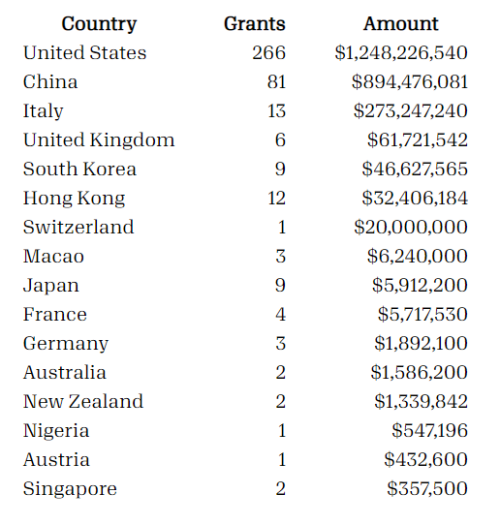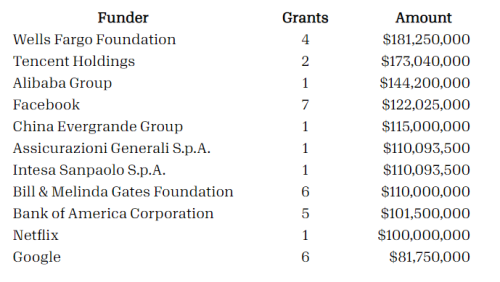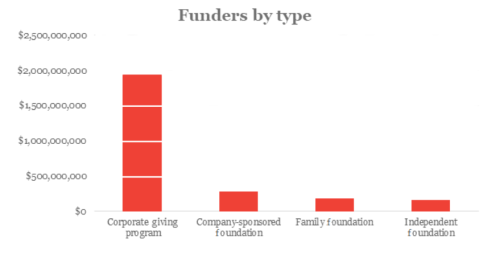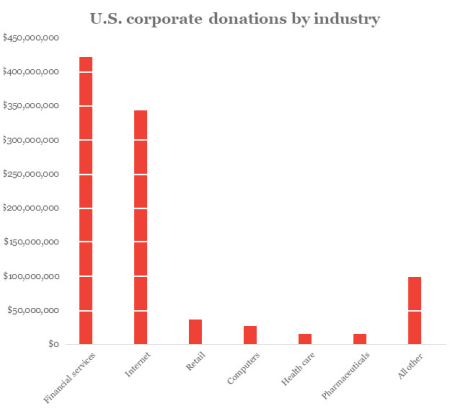Global Philanthropic Response to COVID-19 Approaches $3 Billion
On March 3, Candid identified almost $1 billion in pledges and donations in support of global relief efforts focused on mitigating the impacts of the novel coronavirus (COVID-19). In the weeks since, the virus has infected 719,758 people worldwide and resulted in the deaths of more than 33,673. As the relatively localized outbreak in Wuhan, China, rapidly morphed into a global pandemic, the philanthropic community stepped up to meet the challenge, with pledges and donations in support of relief efforts almost tripling, to $2.6 billion, by March 23.
As was the case during the first two months of the crisis, overall giving for COVID-19 relief in March mirrored historical patterns of disaster giving in every way except total dollar amount (i.e., giving in response to COVID-19 has been much higher). What has changed over the last couple of weeks is funding by country, which has closely tracked migration of the disease.
 Together, the United States and China (including Hong Kong and Macao, China’s Special Administrative Regions) continue to account for 87 percent of pledges and 83 percent of total dollar amount, but the U.S. total has increased almost 700 percent since March 3 and now accounts for more than two-thirds of pledges and almost half the dollars pledged globally for COVID-19 relief. Italy, where the philanthropic response was almost nonexistent two weeks ago, now accounts for 11 percent of total dollar value.
Together, the United States and China (including Hong Kong and Macao, China’s Special Administrative Regions) continue to account for 87 percent of pledges and 83 percent of total dollar amount, but the U.S. total has increased almost 700 percent since March 3 and now accounts for more than two-thirds of pledges and almost half the dollars pledged globally for COVID-19 relief. Italy, where the philanthropic response was almost nonexistent two weeks ago, now accounts for 11 percent of total dollar value.
The position of grantmakers and their relative contributions also have changed. Whereas early on the Bill and Melinda Gates Foundation’s $100 million commitment accounted for 55 percent of total U.S. pledges and contribution, it now represents just 9 percent of the more than $1.2 billion pledged by U.S.-based foundations. The largest single commitment now is the more than $175 million pledged by the Wells Fargo Foundation “to help address food, shelter, small business and housing stability, as well as to provide help to public health organizations.” With its other announced commitment, Wells Fargo total announced contributions now total more than $181.2 million — or 15 percent of the U.S. total. Lastly, where there were only two U.S. grantmakers in our list of the top twenty funders globally at the end of February, there are now six in the top twelve.
 As total commitments and pledges have grown, so have relative contributions by funder type. Direct corporate giving still accounts for the lion’s share of contributions, but the percentage as dollar value of total contributions is down as commitments from corporate, family, and community foundations have increased, with the dollar value of contributions from corporate foundations increasing more than five-fold.
As total commitments and pledges have grown, so have relative contributions by funder type. Direct corporate giving still accounts for the lion’s share of contributions, but the percentage as dollar value of total contributions is down as commitments from corporate, family, and community foundations have increased, with the dollar value of contributions from corporate foundations increasing more than five-fold.
 Companies, both directly and through their foundations, represent 77 percent of the total U.S. philanthropic response to COVID-19. As Candid president Bradford Smith told the Chronicle of Philanthropy, after eleven years of a bull market many businesses have cash reserves. Broken down by industry, corporate giving also is following traditional patterns, with companies in the financial services sector — historically, the most generous sector in terms of its response to disasters — leading the way. With announced commitments totaling $421 million, banks, investment firms, and other kinds of lenders have contributed far and away the most to COVID-19 relief efforts, followed by the big Internet platforms (Amazon, Facebook, Google, Netflix) at $343 million. Together, the two sectors account for 80 percent of the total dollar value of U.S. contributions. (The graph below captures 90 percent of U.S. corporate contributions.)
Companies, both directly and through their foundations, represent 77 percent of the total U.S. philanthropic response to COVID-19. As Candid president Bradford Smith told the Chronicle of Philanthropy, after eleven years of a bull market many businesses have cash reserves. Broken down by industry, corporate giving also is following traditional patterns, with companies in the financial services sector — historically, the most generous sector in terms of its response to disasters — leading the way. With announced commitments totaling $421 million, banks, investment firms, and other kinds of lenders have contributed far and away the most to COVID-19 relief efforts, followed by the big Internet platforms (Amazon, Facebook, Google, Netflix) at $343 million. Together, the two sectors account for 80 percent of the total dollar value of U.S. contributions. (The graph below captures 90 percent of U.S. corporate contributions.)
- Approximately 65 percent of the dollar value of pledges announced in January and February came in the two weeks after January 23. In February, pledges for COVID-19 relief actually declined by more than 12 percent, as countries in various stages of delay and denial looked on as the virus began its relentless spread beyond China’s borders. In the first three weeks of March, by contrast, more than $1.5 billion was pledged, accounting for 61 percent of the total since January 23.
- Unknown and multiple recipients continue to account for most of the pledges and total dollar value, followed by various Chinese Red Cross organizations. For named recipients, we’re seeing a relatively small but growing number of grants to organizations such as Feeding America, Direct Relief, and the CDC Foundation.
- The largest gift from an individual was made by Silvio Berlusconi, the billionaire and former Italian prime minister, who donated 10 million euros ($10.7 million) for a new hospital being built on the former fairgrounds in Milan. Here in the U.S., President Trump donated his Q419 salary of $100,000 to the Department of Health and Human Services.
- In addition to the efforts of organized philanthropy, individuals and communities are coming together to help their families, friends, and neighbors. GoFundMe tweeted that more than 22,000 COVID-19 fundraisers have been initiated in the past few weeks by the global GoFundMe community, and that, collectively, they’ve raised more than $40 million.
In my first post, I speculated about whether private philanthropy would eventually step aside — as it did during the 2014 Ebola epidemic — as large-scale action and resources were brought to bear on the crisis by national governments. Back then (a month ago), I thought it would depend on how governments performed with respect to their fundamental obligations to guarantee public health and safety.
Now that several governments have concluded that maintaining public health and safety requires the shuttering of businesses and a prohibition of most kinds of social interaction, we are facing much more than a public health emergency. Indeed, the rapidly cascading economic downturn in the U.S. (and many other countries) promises to affect everybody over the next few months.
As governments scramble to respond, private philanthropy, especially community foundations, are creating COVID-19 response funds to help the most vulnerable members of their communities weather the storm. Philanthropy cannot and will not replace government action, but it is well positioned to move quickly and compassionately to offer a helping hand to those in need.
For more information on philanthropy’s response to the pandemic, visit Candid’s Funding for Coronavirus (COVID-19) popup page.







